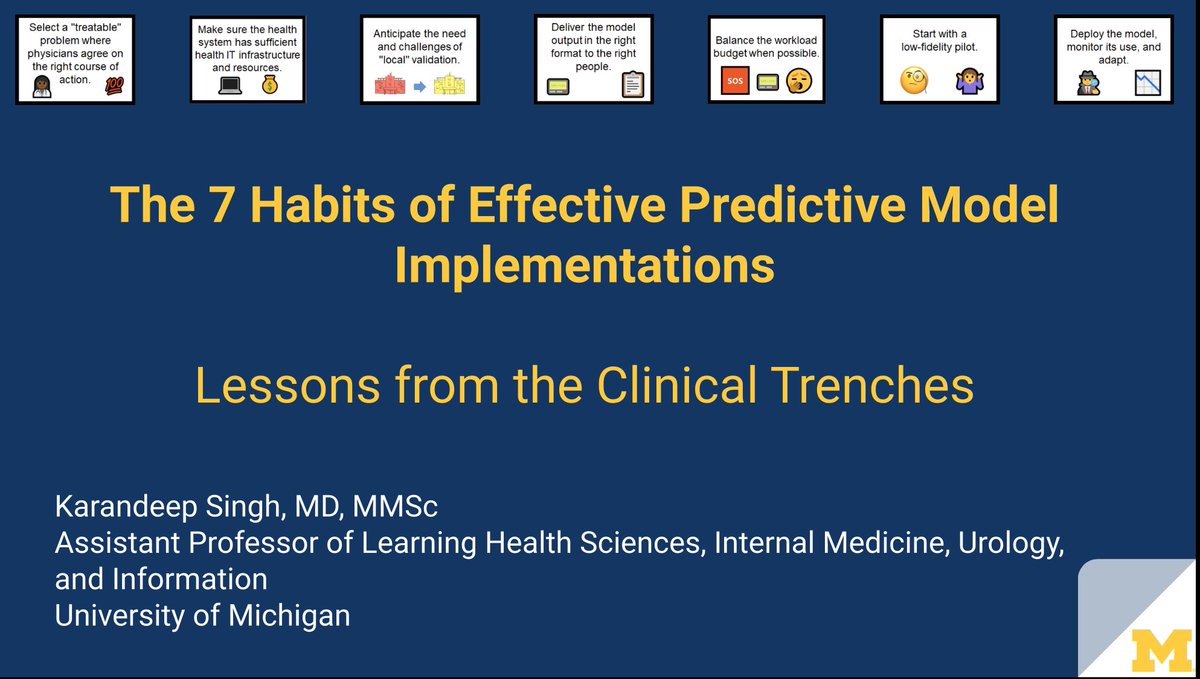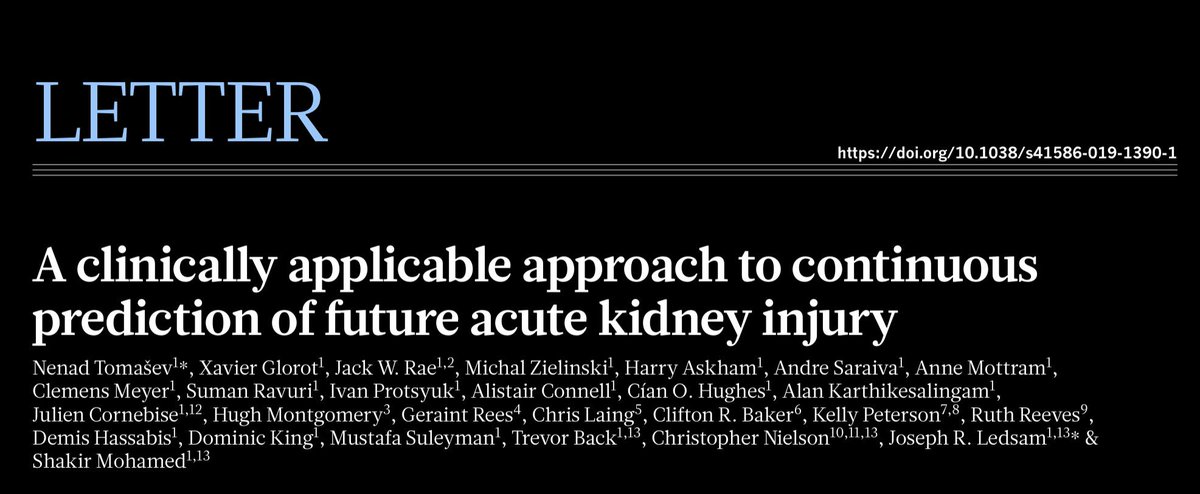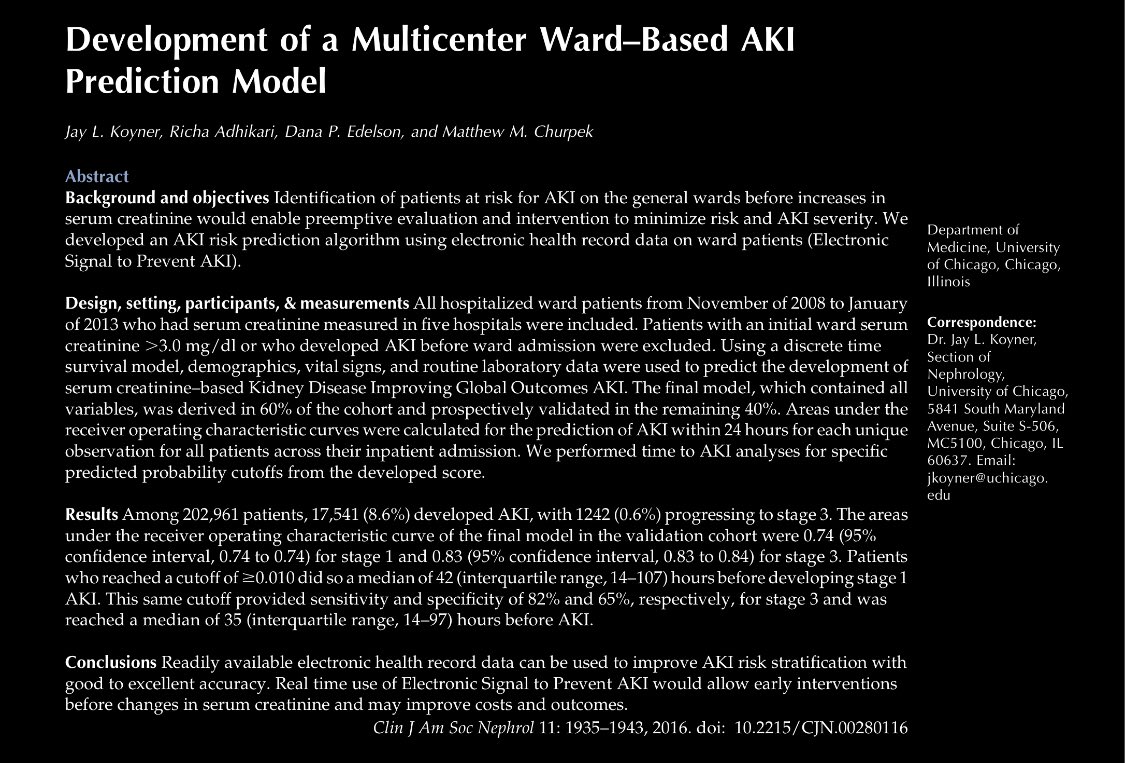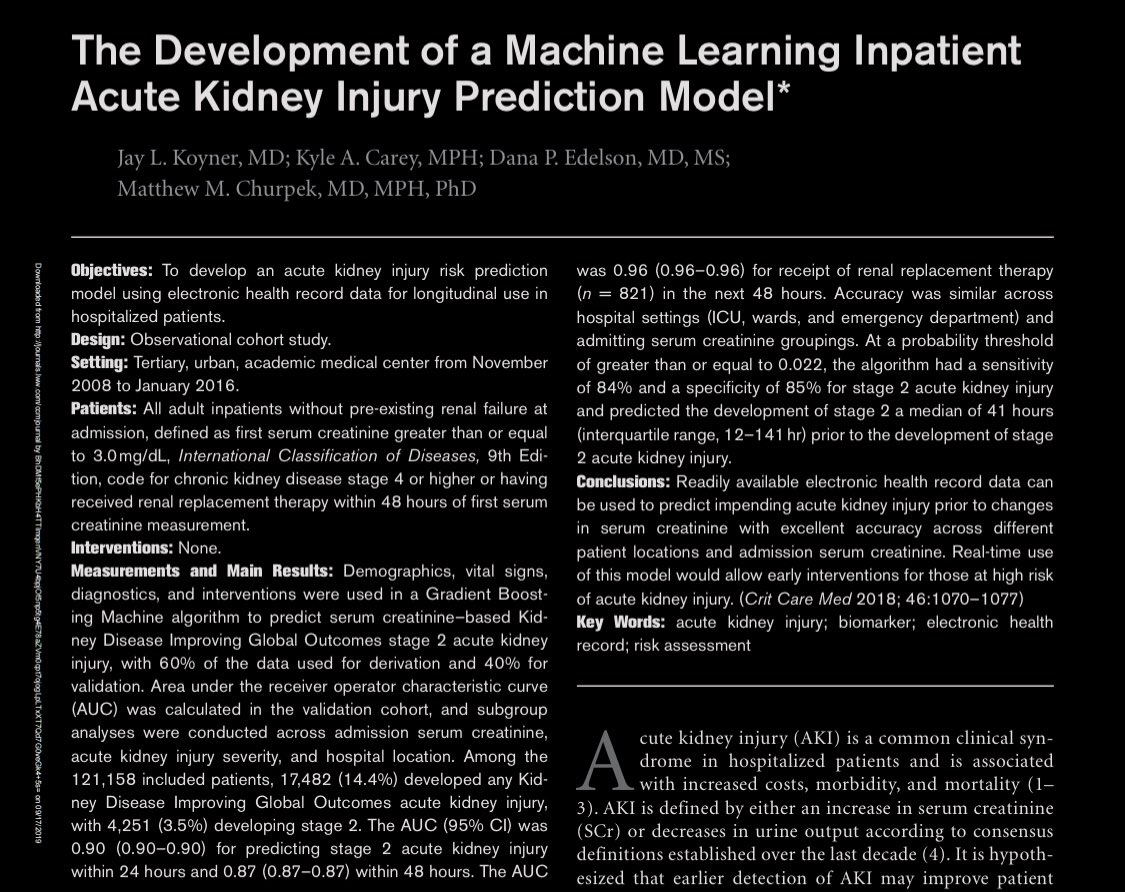Manuscript: medrxiv.org/content/10.110…
Code: github.com/ml4lhs/edi_val…
Why did we do this? What does it mean? Is the Epic deterioration index useful in COVID-19? (Thread)
wired.com/story/in-one-h…
statnews.com/2020/04/01/sta…

hai.stanford.edu/events/covid-1…
epic.com/epic/post/arti…

statnews.com/2020/04/24/cor…
bmj.com/content/369/bm…
- We did inform our hospitalists how to add EDI to their signout and how to interpret the score via @vineet_chopra
- We did suggest using it as an adjunct to help prioritize signout and rounding
Others shaped this work substantially: @bnallamo, @jzayanian, Dr. Jenna Wiens, @tsvalley @msjoding and others.
H/t @darrendahly, whose code I revised to generate calibration plots.
Let me just re-emphasize: This is a preprint. It's not peer-reviewed. Appreciate hearing your feedback and your own experiences with EDI.


















